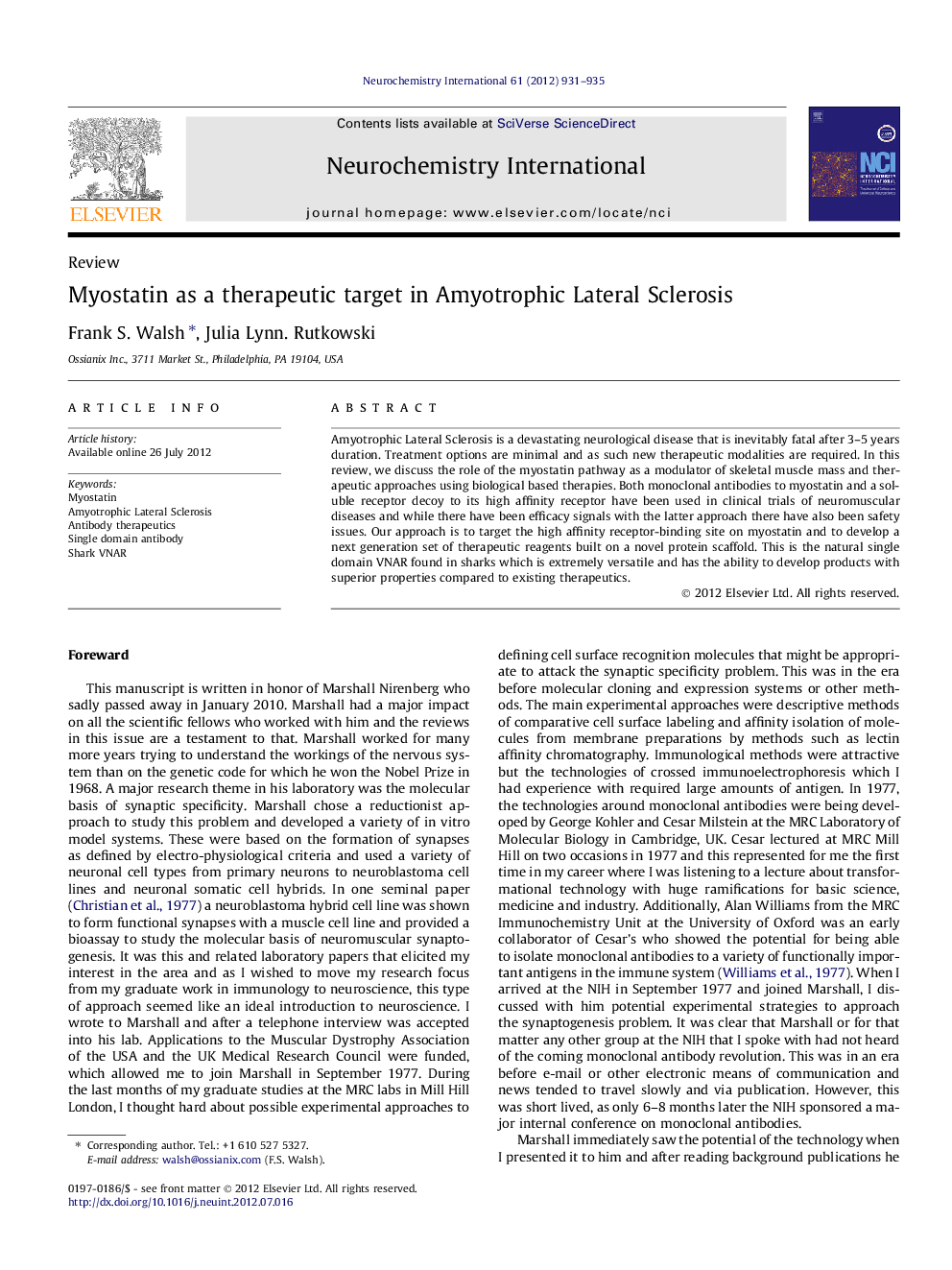| Article ID | Journal | Published Year | Pages | File Type |
|---|---|---|---|---|
| 2200836 | Neurochemistry International | 2012 | 5 Pages |
Amyotrophic Lateral Sclerosis is a devastating neurological disease that is inevitably fatal after 3–5 years duration. Treatment options are minimal and as such new therapeutic modalities are required. In this review, we discuss the role of the myostatin pathway as a modulator of skeletal muscle mass and therapeutic approaches using biological based therapies. Both monoclonal antibodies to myostatin and a soluble receptor decoy to its high affinity receptor have been used in clinical trials of neuromuscular diseases and while there have been efficacy signals with the latter approach there have also been safety issues. Our approach is to target the high affinity receptor-binding site on myostatin and to develop a next generation set of therapeutic reagents built on a novel protein scaffold. This is the natural single domain VNAR found in sharks which is extremely versatile and has the ability to develop products with superior properties compared to existing therapeutics.
► Myostatin modulates muscle mass. ► ALS is characterized by muscle loss. ► Antibodies can be used as therapeutic agents. ► Small shark VNAR antibodies may be superior therapeutics. ► Myostatin antibodies could alter the outcome of ALS.
